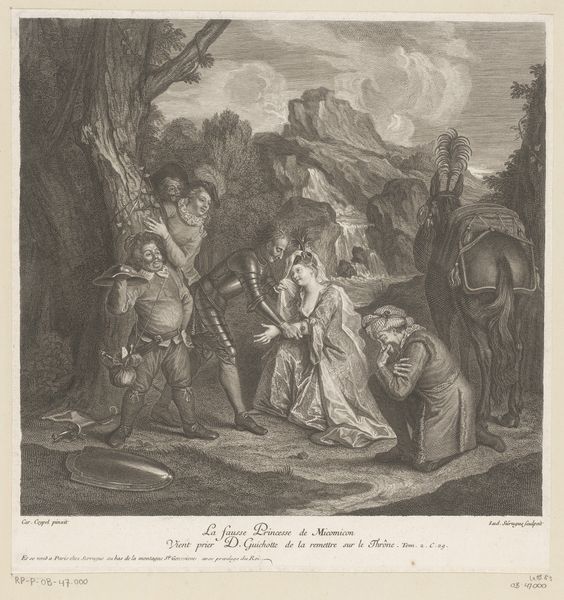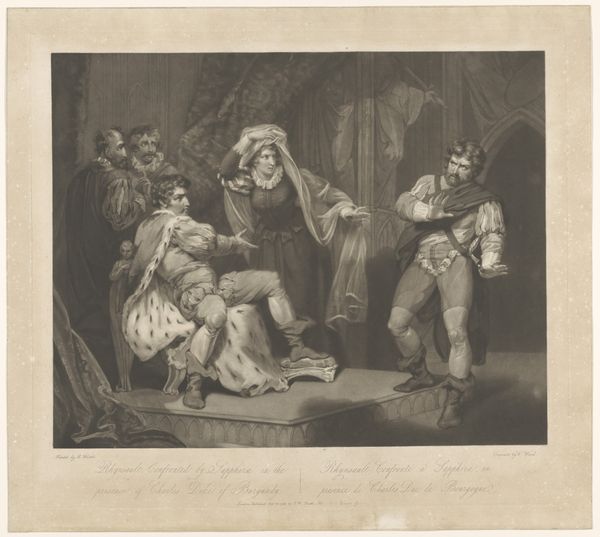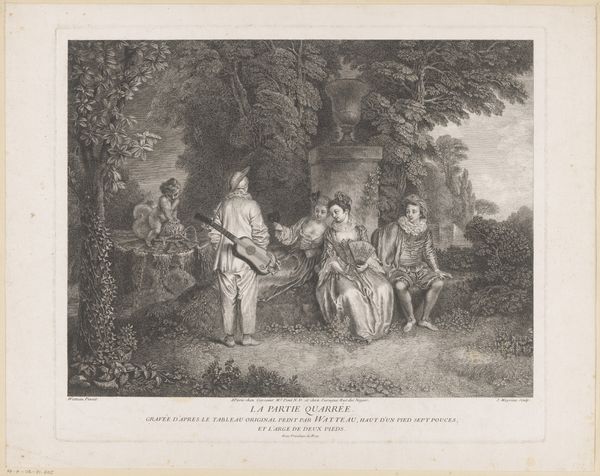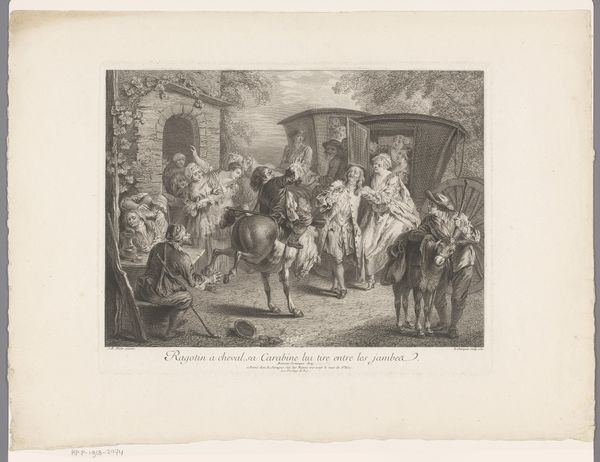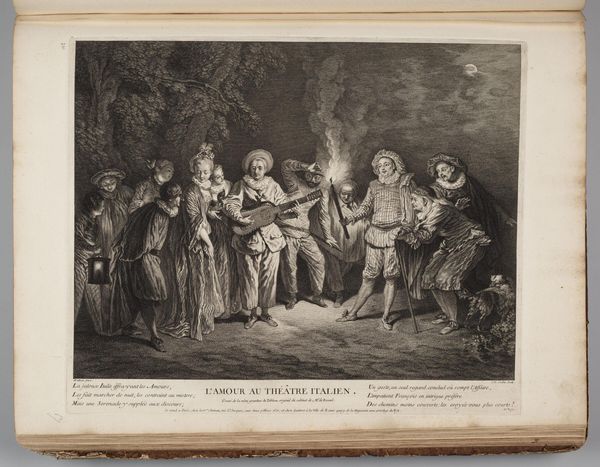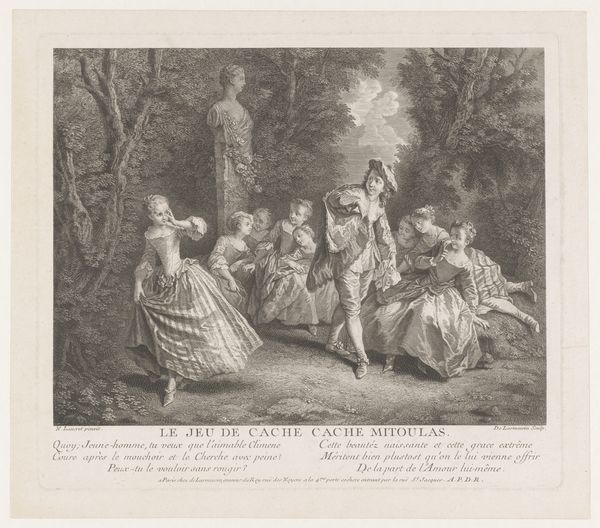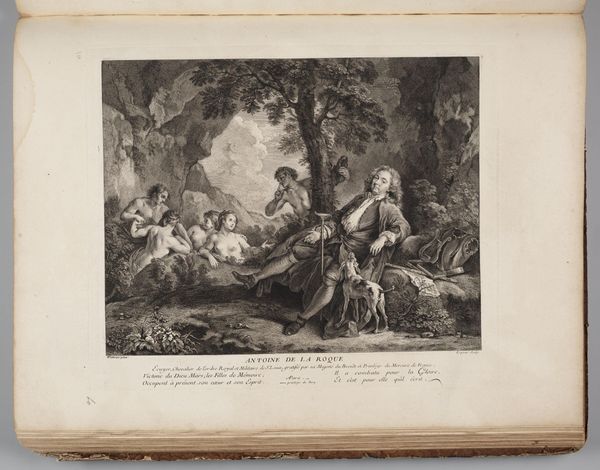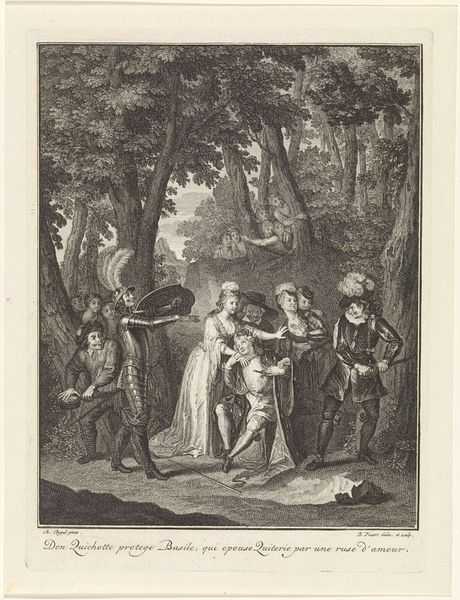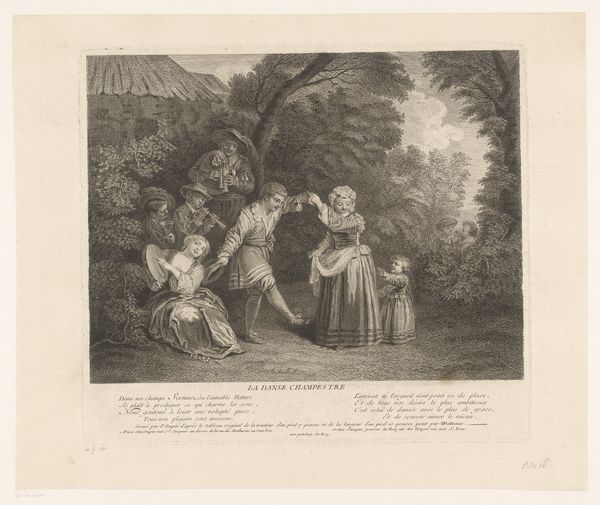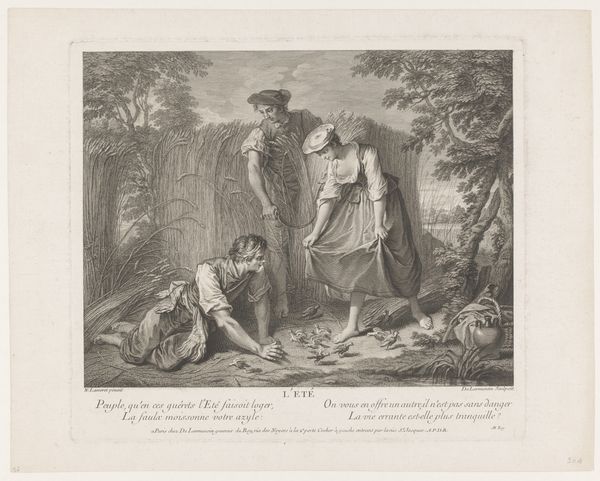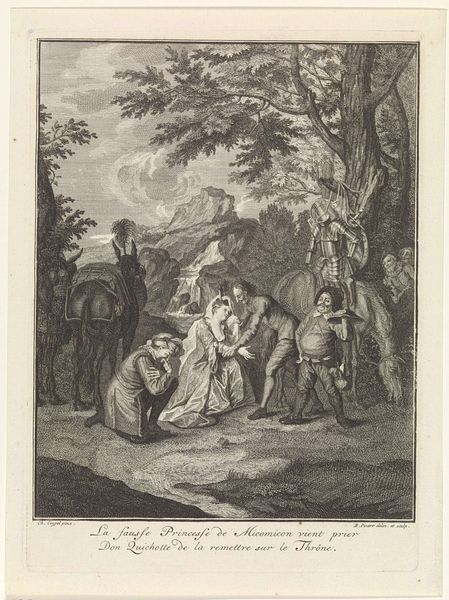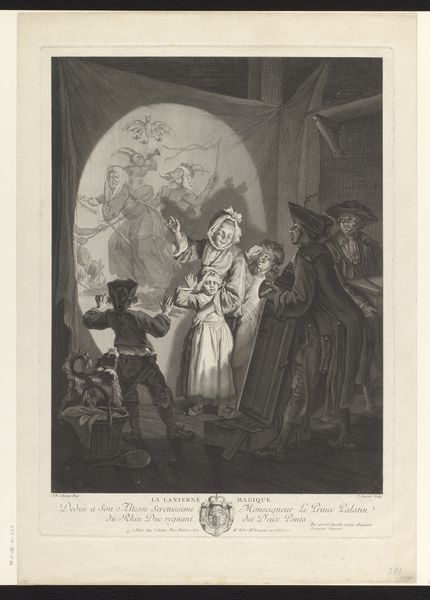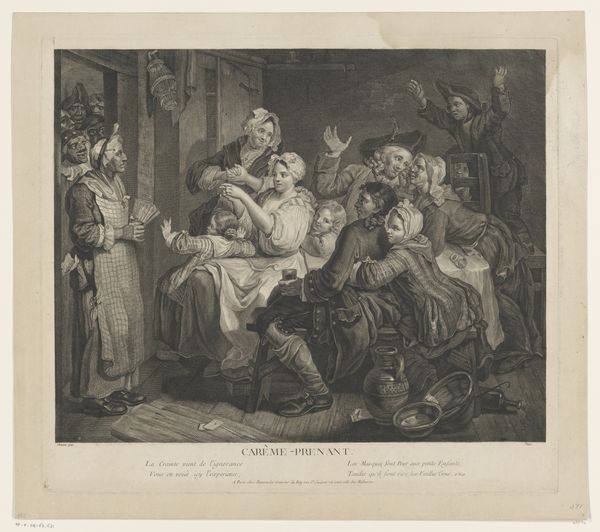
print, engraving
#
narrative-art
#
baroque
# print
#
history-painting
#
engraving
Dimensions: height 304 mm, width 300 mm
Copyright: Rijks Museum: Open Domain
Editor: Here we have an engraving from somewhere between 1697 and 1763 by Nicolas de Beauvais entitled “Don Quichot Beschermt Twee Geliefden Tegen een Rivall". It seems to depict a theatrical, dramatic scene, perhaps from a play, with many characters frozen in expressive poses. How do you read this composition in its historical moment? Curator: It’s interesting you describe it as theatrical. Let’s consider this work through the lens of performativity and societal expectations of gender roles. Notice the centrality of Don Quixote, mediating the romantic entanglement. How might his "protection" of the lovers actually reinforce a patriarchal system, where male figures control female agency and relationships? Editor: That's a thought-provoking angle! I hadn't considered Don Quixote's role beyond the literal depiction of the story. Is it typical for art of this period to mask those societal structures beneath what seems like a narrative of romantic heroism? Curator: The Baroque often employs grand narratives to legitimize power structures. Think about the court of Louis XIV and the construction of absolutist rule. By positioning figures like Don Quixote as heroic protectors, are we inadvertently celebrating male privilege and compulsory heterosexuality? Are we overlooking the potential for queer readings or the silencing of marginalized voices within the artwork's social milieu? Editor: It does make me reconsider what heroism means in art. Curator: Exactly! Consider also how the concept of “love” itself may have been weaponized. Does the seemingly celebratory representation of the couple actually serve to solidify social norms surrounding marriage and inheritance, potentially excluding other forms of intimacy and belonging? Editor: This deepens my understanding of art as a cultural product, not just an aesthetic one. Thanks! Curator: Likewise. By questioning these traditional narratives, we unlock avenues to create genuinely inclusive interpretations that speak to the complexities of our contemporary experiences.
Comments
No comments
Be the first to comment and join the conversation on the ultimate creative platform.
